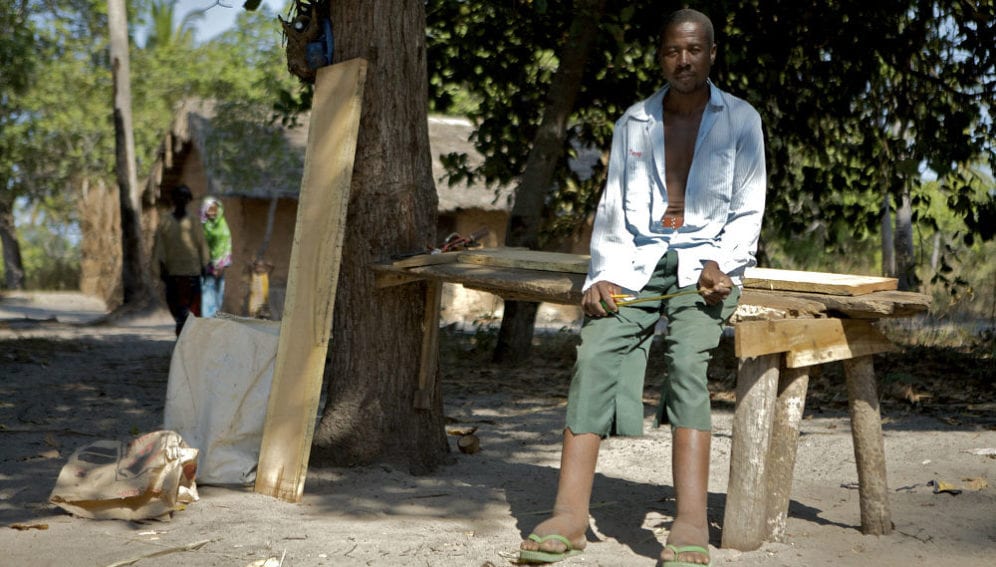By: Samuel Hinneh
Send to a friend
The details you provide on this page will not be used to send unsolicited email, and will not be sold to a 3rd party. See privacy policy.
African leaders have adopted a new index that helps track progress in mass treatment of neglected tropical diseases (NTDs) in Sub-Saharan Africa.
Five NTDs — lymphatic filariasis, onchocerciasis, schistosomiasis, soil-transmitted helminths and trachoma — were added to African heads of states’ annual scorecard or index on disease progress last month (28 January), during the 30th African Union summit in Ethiopia.
“It [mobile technology] also played a role in identifying where treatment was no longer needed, saving millions of donated medicines.”
Thoko Elphick-Pooley
The scorecard is reviewed by African heads of state every year, and the move puts NTDs alongside malaria and maternal and child health as top health priorities for the continent.
The index ranks African countries in their mass treatment coverage of the five NTDs. According to Christopher Fitzpatrick health economist at WHO’s Department of Control of Neglected Tropical Diseases, it uses an estimate of the average percentage of the population covered by interventions against individual NTDs.
Swaziland, Malawi, Burkina Faso, Sierra Leone, Togo and Ghana respectively took the first six spots in 2016, the most recent year for which data could be drawn for the index. Swaziland, for example, had a coverage of 90 per cent, while that of Ghana was 70 per cent.
The index was created by the WHO and Uniting to Combat Neglected Tropical Diseases using data reported to the WHO by the national NTD programmes.
It also shows that 40 million more people in Sub-Saharan Africa received preventive treatment for at least one of the diseases in 2016 compared to 2015, while over 50 per cent countries improved their mass treatment coverage between 2015 and 2016, with Togo certified by the WHO as eliminating lymphatic filariasis.
Fitzpatrick tells SciDev.Net that the progress in extending coverage for NTDs interventions is driven primarily through programmes from national level to community volunteers, to deliver donated medicines to people who need them.
Thoko Elphick-Pooley, director of Uniting to Combat NTDs Support Centre, says the index shows countries’ progress in line with universal health coverage, adding that having a regular calculation can help assess whether good performance in one disease over-compensating for poor performance in another.
Elphick-Pooley adds that using mobile phone technology has played a key role in efficiently mapping NTDs in countries such as Benin, Chad, Cote D’Ivoire, Democratic Republic of Congo and Ethiopia.
“It also played a role in identifying where treatment was no longer needed, saving millions of donated medicines,” she says.
Africa carries about 40 per cent of the NTDs burden — but although the global treatment coverage is around 63 per cent on average, Africa lags behind with 58 per cent, she emphasises.
The WHO and Uniting to Combat NTDs are calling for establishing a task force on NTDs at the African Union to regularly monitor and report on progress.
John H. Amuasi, executive director of the African Research Network for Neglected Tropical Diseases at Ghana’s Kwame Nkrumah University of Science and Technology, says that improved diagnostics, surveillance and new combination therapies are helping Sub-Saharan African countries to fight NTDs.
But Amuasi explains that most of the cutting-edge research on these diseases is being carried out outside the region, where Europe and North America are leading the charge.“It is necessary that African countries set aside funds for African researchers…for NTDs research ranging from drug discovery, novel diagnostics, through to operational research, and social science studies to eliminate NTDs,” he notes.
This piece was produced by SciDev.Net’s Sub-Saharan Africa English desk.














